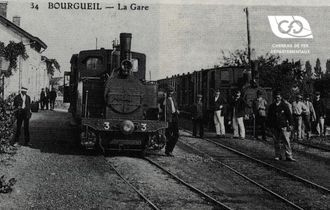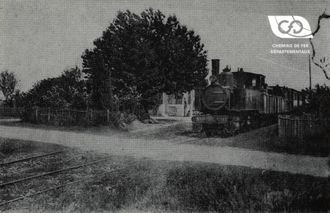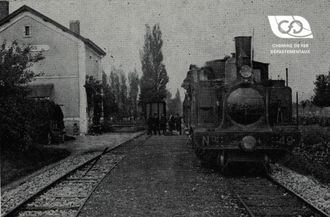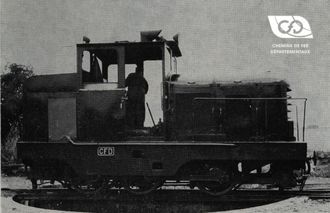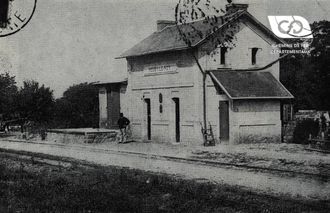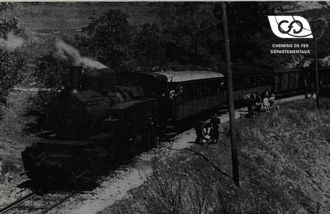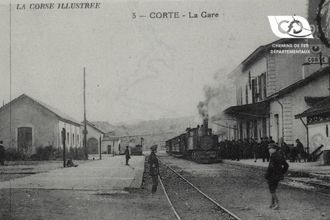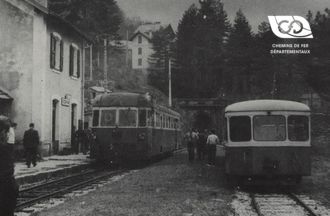The development of the locomotive is obviously linked to that of the diesel engine, on the one hand, and to the evolution of power transmission systems to the axles, on the other hand; it is essentially the progress made in these two fields that conditions those of the locomotive ; the history of diesel traction is that of the improvements made to these essential components, to reduce their weight without harming their longevity, while improving, for a given engine power, the forces available at the rim over as wide a range of locomotive speeds as possible.
Although the creation of the diesel engine dates back to the end of the nineteenth century, it was not until the 1940s that diesel locomotives became widely used throughout the world.
Reminder of the most characteristic tests in the period before 1940.
Many attempts were made during this period to adapt the diesel engine to rail traction, and many prototypes were developed without being able to go beyond the testing stage; despite the interest of some of them, we will limit ourselves to listing the most significant achievements:
Tests carried out between 1912 and 1928
- In 1912, a Borsig/Sulzer locomotive was tested by the Prussian Railways (Fig. 1). 95 t 2-B-2 locomotive, direct drive, with a 2-stroke 1000 HP 2-stroke engine; starting with compressed air.
- In 1923, the first 1-E-l type diesel electric locomotive by Professor Lomonossof was built for Russian Railways, equipped with a 1200 HP MAN marine engine running at 400/450 rpm; weight 125 t, maximum speed 50 km/h. It was followed in 1926 by a similar locomotive with mechanical transmission.
- In 1928, the German Railways tested a 128-ton 2-C-2 locomotive with a maximum speed of 80 km/h, equipped with the same diesel engine as the previous machines but with a pneumatic transmission.
- In 1928, Canadian National Railways put into service a 2660 HP electric diesel locomotive, consisting of 2 units of the 2-D-l type; maximum speed 105 km/h, weight 294 t, Beardmore-Westinghouse diesel engines running at 800 rpm.
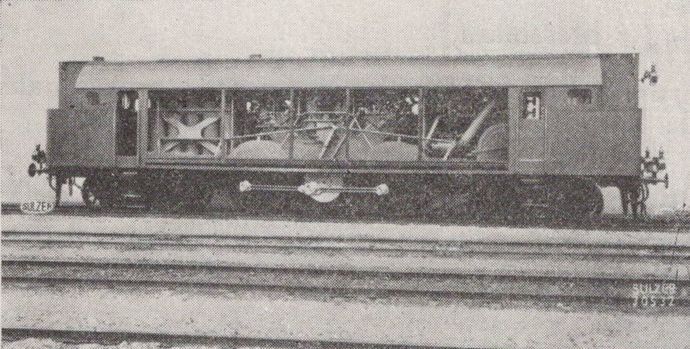
1932-1940: a period of progress
- From 1933 to 1940, German Railways tested a Deutz locomotive, type 2-B-2, about 1000 HP, with direct transmission; maximum speed 110 km/h / 110 mph, weight 87 tons.
- During the years 1932 to 1940, the progress of the diesel engine was further developed. First of all, light fast diesel engines with 1400/1500 rpm were developed, which were still not powerful enough for locomotives, but which already opened up new possibilities, which were of benefit to slower engines. In the latter category, manufacturers are working to reduce weight and are producing engines specially designed for rail traction: general dimensions adapted to the locomotive gauge, higher rotational speeds, generalisation of mechanical injection, more compact generating sets, etc... Finally, the supercharging of 4-stroke engines is developing and will provide a significant increase in power-to-weight ratio.
- In 1932, the Danish Railways put into service 2 2-D-2 electric diesel locomotives (103 t, 100 km/h) equipped with 2 Frichs engines of 450/500 HP, and fitted with a heating boiler. These 2 machines are still in service.
- In 1933, tests were carried out by various French networks on 500 to 750 HP diesel electric locomotives.
- At the same time, the Argentinian Railways, which had previously experimented with "rolling power plants" that powered traction motors located under the towed cars, put into service a 1700 HP diesel electric locomotive in 2 units (2 Sulzer engines of 850 HP, at 550 rpm, maximum speed 112 km/h, weight 145 t).
- In 1935 a 1200 HP 1-C-l locomotive with a supercharged MAN engine and a hydraulic Voith transmission was put into service by the German Railways. Maximum speed 100 km/h / 62 mph, weight 75 tons.
- At the beginning of 1938, the PLM network put into service, on Paris-Lyon, 2 prototype 4000 HP electric diesel locomotives, each consisting of 2 2-C-2 units (Sulzer and MAN supercharged engines running at about 700 rpm, maximum speed 130 km/h, weight 226 t). A locomotive similar to the previous ones was delivered the following year by Sulzer to Romanian Railways.
- In the United States, the Chicago-Burlington put the 660 HP triple articulated "Zephyr" train into service in 1934, which was the start of the great diesel traction in this country. The following year, the famous Santa Fe "Super-Chief" transcontinental train was towed from end to end, over the 3600 km between Chicago and Los Angeles, by a 3600 HP diesel locomotive in two units. From then on, mainline locomotives for passenger trains developed rapidly in the United States. S. A., along with shunting locomotives.
This was, very quickly sketched out, the evolution of diesel traction until 1939. It can be said that, until that date, the Railways, except perhaps in the United States, confined themselves to experimenting with the new mode of traction, without embarking on systematic and extensive applications.
Nevertheless, with respect to shunting services, the advantages of diesel traction were well known, and in many cases extension programmes were being developed. However, the technical difficulties of building powerful diesel locomotives still left some doubts about the economic interest of their application to line-haul services.
source : Excerpt from the article L'EVOLUTION DE LA LOCOMOTIVE DIESEL by Ch. TOURNEUR, Chief Engineer at the S. N. C. F. appeared in the Revue Universelle de Mines July 55





